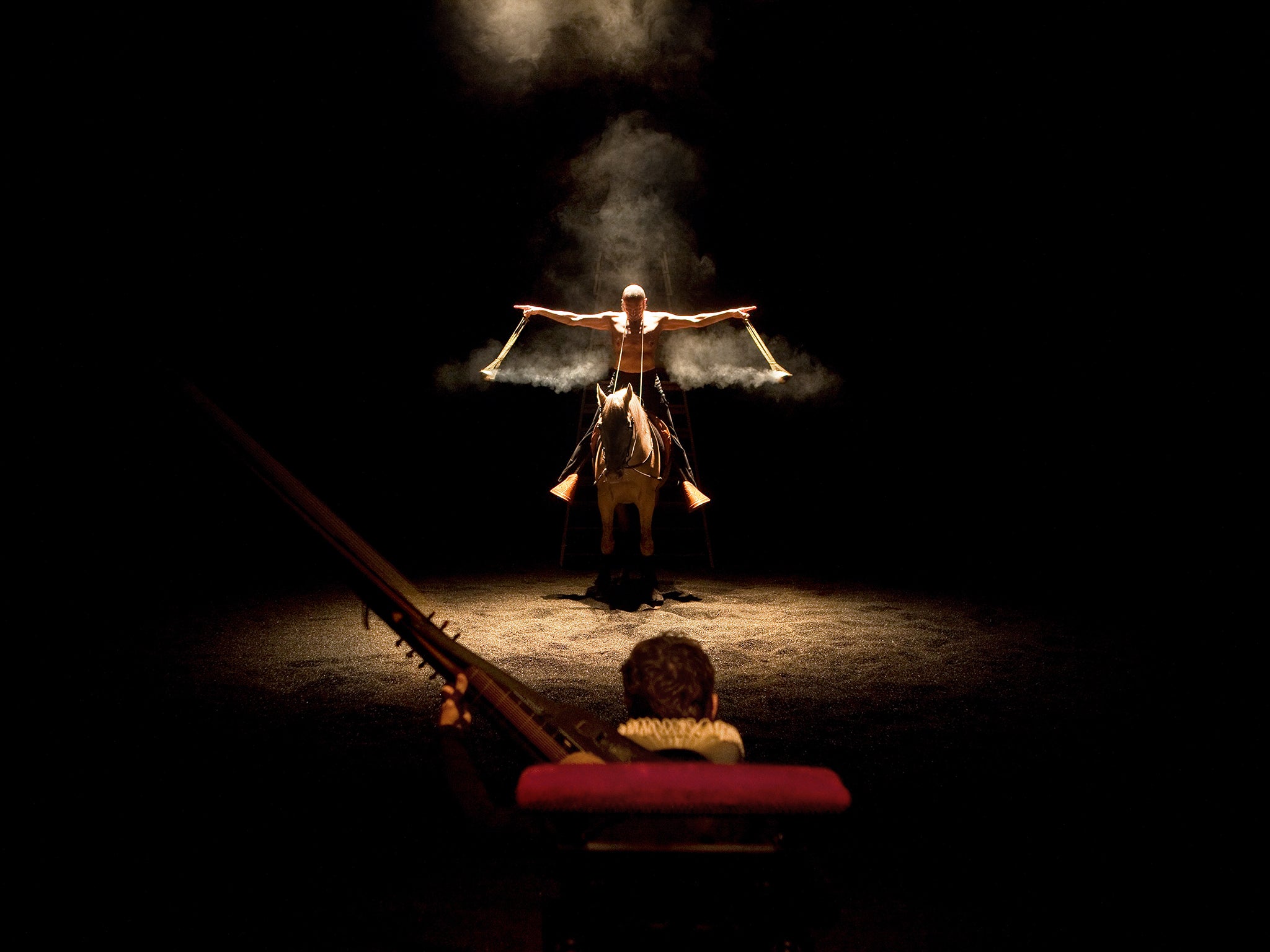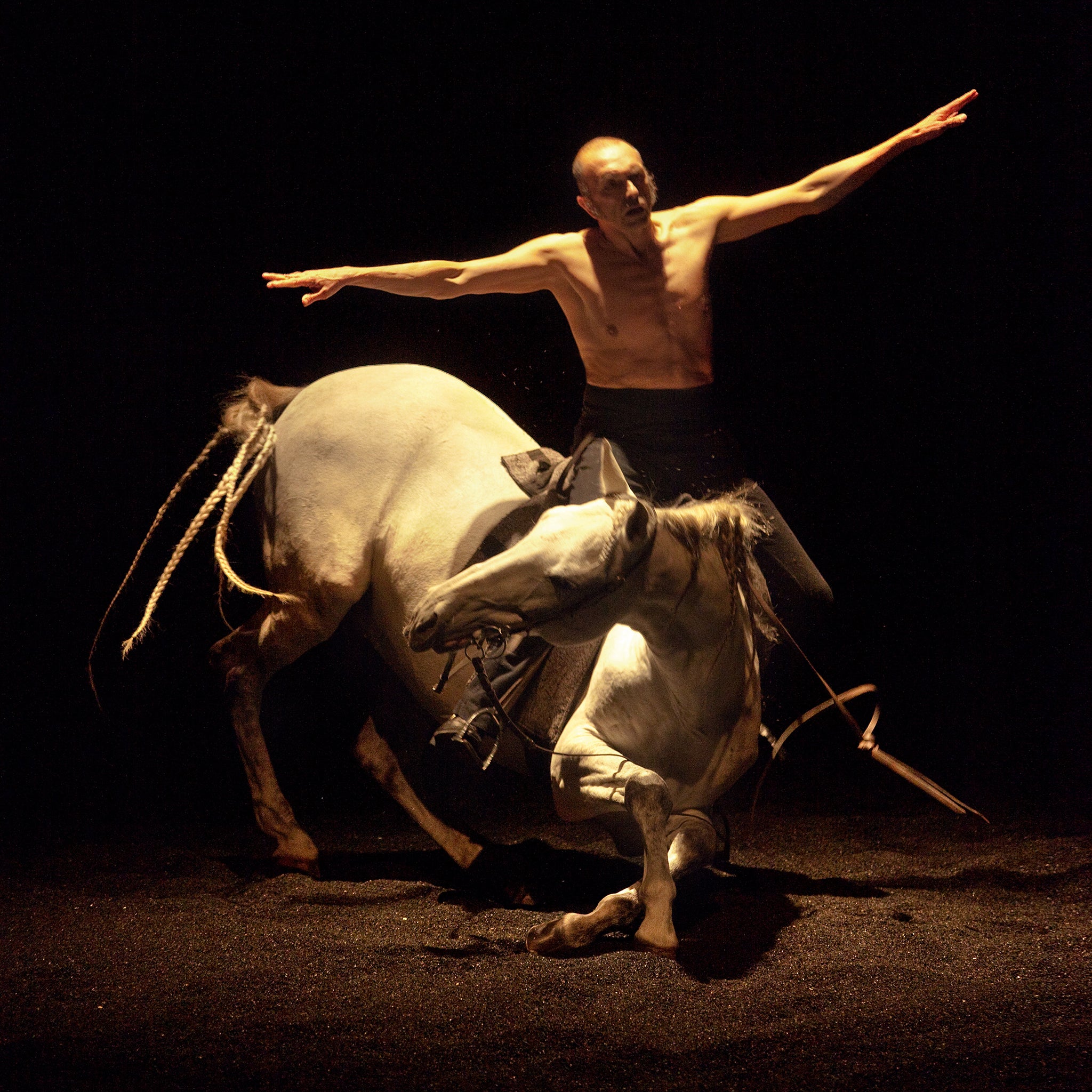Golgota, Sadler’s Wells, review: A strange mixture of pompous theatre and horsey skill
The ritual imagery feels empty, a series of poses that aren’t improved by being on horseback

The four horses in Bartabas’s Golgota are handsome, glossy and very patient. They need to be, given how much heavy-handed symbolism goes on around their well-trained heads. This equestrian dance production is a strange mixture of pompous theatre and horsey skill.
Bartabas, a French artist and horse trainer, founded his equestrian theatre company Zingaro in 1984. His production brings live horses on stage, moving amongst actors, props and musicians. The horse performances draw on a centuries-long tradition of equitation. Bartabas himself is a gifted horseman and a terrible ham.
Religious ritual is the theme of Golgota, with a strong Spanish influence. The pointed headdresses and self-flagellation are drawn from the Holy Week processions of Seville; black costumes and white ruffs recall paintings by El Greco. The music, performed live by countertenor Christophe Baska and a group of musicians, is by the Spanish renaissance composer Tomás Luis de Victoria. Bartabas co-stars with flamenco dancer Andrés Marín.
These are images that have their own power, which is frittered away by poor pacing and the self-consciousness of the staging. In one scene, Bartabas rides a horse which repeatedly falls to the ground – recalling St Paul, struck down on the way to Damascus. The horse folds itself to the floor, an obedient mountain of muscle and sinew. On its back, Bartabas is all bug eyes and gaping mouth.

That exaggeration runs right through the performance. Golgota opens with actor William Panza, dressed as a priest, repeatedly putting coins in the slot of a prayer candle machine, eyebrowing the audience to ask for extra funds. Panza is allowed to be serious in one scene, leading a procession; the rest of the time, he’s stuck with funny walks and costume changes. It’s not remotely surprising when he pops up in the crucifixion scene, wearing a jester’s cap and bells and doing supervillain cackles.
If Panza is the production’s comic relief, Marín provides its dance elements. Unusually for a flamenco dancer, he spends most of the show barefoot; the stage is strewn with cushioning rubber chips, so stamped footwork is out of the question. Instead, Marín dances silently, showing off the speed and articulation of his feet, or uses a board to tap out rhythms with his fingers.
He’s also the show’s leading penitent, or its Christ figure. Bartabas crosses the stage on horseback, with Marín trailing after him, using the horse’s plaited tail as a whip for his own shoulders. Hoof-shaped shoes are placed on his feet before he’s dragged up a ladder to be crucified.
Meanwhile, Bartabas rides his horses in tight circles or puts them through their dressage paces, striking attitudes on their backs. Sometimes he carries lighted candles, or swings incense burners. The use of smoke and flame shows off his control of the animals, while putting a clunky emphasis on the mechanics of the show. Worst of all, the ritual imagery feels empty, a series of poses that aren’t improved by being on horseback.
Join our commenting forum
Join thought-provoking conversations, follow other Independent readers and see their replies
Comments